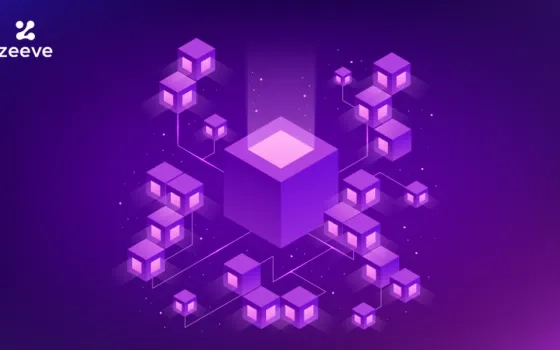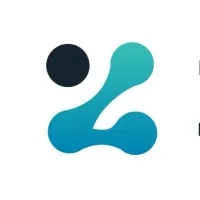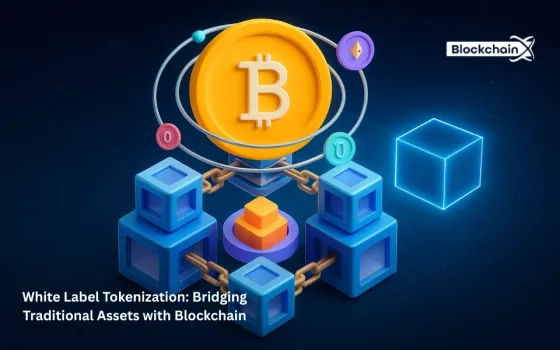Blockchain technology offers a wide array of benefits and promising results, making it adaptable across all industries. Till now, one factor that stops the mass adoption of blockchain is interoperability. Pioneering blockchain interoperability will show substantial improvement in the adoption of the technology.
Various organizations and institutions have to store massive information and support data transfer from anywhere possible. Thus, blockchain interoperability or “inter-blockchain communication” is a vital requirement. Otherwise, there will be a disconnection from real-world applications if the technology isn’t upgraded. Until now, AI and the IoT have reached the level of interoperability.
Communication in-real time should be there to improve business operations. Wider technology adoption will pave the path for more research and development initiatives. As per the reports by WEF, interoperability isn’t only an issue in terms of technology but also affects governance and data ownership.
In the blog, we will understand the meaning of what is blockchain and how can it affect interoperability, its advantages, and its challenges. Further, will know more about the ongoing projects on blockchain interoperability.
What is Blockchain Interoperability
We require communication at the workplace for better operation. Similarly, there is a requirement for communication between blockchain protocols to share information.
Imagine you have a Yahoo email account, and to send information to a Gmail account, you are required to create another Gmail account. This is what happens if there is no interoperability in place. With blockchain and interoperability, an artist would be able to tokenize an NFT by a dApp and then receive payment in any crypto.
The layer one blockchain protocol has the problem of blockchain interoperability. There are arrays of operations such as recording, transactions, and storing data. However, the automation process lags if interoperability in the blockchain isn’t there. The security and all other factors should be reliable. At present, centralized systems are better at providing end-to-end solutions.
Automation has always been important, and more companies are looking forward to it. AI has already made the automation process easier. Therefore, blockchain application developers should prioritize interoperability, which is crucial to make the individual system work together uninterrupted.
What is Cross-Chain Blockchain
The term is often to be heard when discussing interoperability in blockchains. Cross-chain is the communication between two independent blockchains. The implementation is necessary for asset transfer. The communication between the networks can be divided into two types — isomorphic and heterogeneous.
Isomeric chains are those which have similar consensus mechanisms, network topology, etc. In contrast, the cross-chain interoperability in the heterogenous mechanism is when the consensus mechanisms are different. Suppose an interaction between PoW and PBFT will be heterogeneous.
Interoperability and Web3
Web3 helps to promote the state-of-art-tech among blockchain networks. Suppose you watch a review of your favorite product on Google, then go to Amazon to order and finally use a payment app to make a payment. Similarly, in Web3, users do need different platforms to conclude one single task. The online world is dynamic, and to make it more adaptable inter-blockchain communication is required.
A Polkadot wallet may not work with Defi on Ethereum. Interoperability is essential to access different blockchain networks. This gives freedom to users and is essential for maintaining security as both Web3 and Blockchain are codependent on each other.
How to achieve Blockchain Interoperability
The interoperability in a blockchain ecosystem gives increased scalability and incentive to work with multiple applications. However, the process takes time to develop.
Mashed API method
In the Application Programming Interface(API) to attain interoperability, there is a transfer of data payloads. To achieve this the API is designed so as to let individual blockchain systems interact with each other. This API generation does not require extensive programming skills
However, the method is flexible but the governance structure is not available. In the API method, the integration with blockchain should be done on a one-to-one basis. Thus, interoperability is achieved however it is inefficient. While data transfer with the use of APIs there can also cause authentication deficiencies. Therefore, the method gives limited interoperability.
Network of Networks Method
It is a better method as compared to API. It allows blockchain developers to make interoperability scalable and efficient. Since the process is industry standard by employing this method, it will also be easy to understand which blockchain networks can be converged.
The Network of Networks method creates blockchain network hubs, and the data transmission happens through various communication channels. Developers use the network architecture to connect the networks digitally.
Blockchain Interoperability Projects
In recent years, there has been a growing number of interoperable blockchain projects aiming to improve the network. Among many projects, here are a few of the best blockchain interoperability projects:
Polkadot
The blockchain has parachains through which the Polkadot architecture allows transactions at large distances. Further, it uses the DPoS algorithm and validators to create centralization as well. The data security is also maintained well in Polkadot and has better scalability without compromising on governance. Polkachain blockchain interoperability enables the communication between various blockchain networks.
Cosmos
Cosmos, a smart contract platform, has developed a Cosmos SDK platform for blockchain interoperability. It uses the “hub-and-spoke” system to form a network of spokes and connect all to a hub. Cosmos consensus algorithm is the Byzantine fault tolerant to create an ‘internet of blockchains’ — a wide network of blockchains to improve communication.
Cardano
Cardano is one of the leaders in smart contract functionality. To approach interoperability, it leverages the cross-chain certificate standard and the Proof-of-Stake (PoS). Although, the PoS chains have interoperability issues however Cardano has the possibility of communicating with Algorand.
Wanchain
The Wanchain network lets communication between public and private networks. The network employs the T-Bridge framework and storeman nodes to facilitate blockchain interoperability. The nodes combine multi-party computation and “Shamir’s secret sharing” to bring security to the network. The framework helps establish a network between blockchains such as Ethereum, Bitcoin, and EOS.
Lisk
Lisk uses the sidechain for the communication between chains. The side chains have a cross-chain messenger and cross-chain updates to add information throughout blocks. Subsequently, the side chains built on Lisk SDK can provide information along the blockchain network through the mainnet. The transaction-related messages are collected, verified, and lastly added to the block.
Benefits of Blockchain Interoperability
Till now we have seen how blockchain interoperability creates meaningful interaction between different networks. Here are a few of the benefits of adopting interoperable blockchains:
Customized Web3
The interoperable smart contracts can have a wide range of applications. The information would be easy to send between private and public and it will be customizable. Also, the multi-token wallet systems would be easy to implement. All of this will make Web3 more customized and easy to use.
Better Decentralized consensus
The decentralization will improve as there will be thousands of decentralized apps to manage them along with multiple networks. There will not be a monopoly of any network. Moreover, the decentralized consensus caters to a decentralized economy. There would be an unrestricted flow of data within a network, and the blockchain ecosystem will grow at an unprecedented speed.
Presents cross-industry collaboration
The cross-industry collaboration will be easier to implement and there will be the transfer of data, value, and information. There will also be data transparency and smart contract execution all at one hub. Currently, every industry is adopting blockchain technology; with networks connected through a single network, the exchange of data and services becomes hassle-free.
Challenges in Achieving Blockchain Interoperability
The process of attaining interoperability is complex. The blockchain, when registered on a network, is considered immutable. Thus, checking the data before submitting a starting node is essential.
The trust level also varies on different networks. Information exchange between two networks with different security levels can cause data manipulation.
A few other challenges regarding blockchain interoperability are providing developer friendliness and tolerance to diversity. Since the different networks have different technology used, there is a lot of diversity in operating efficiently.
Wrapping Up
Blockchain transactions are happening nowadays on an atomic level due to improvements in interoperability by various networks. With further improvement, we don’t require users to input data repeatedly. Enhancing interoperability will offer not only speed but also sustainability in the use of blockchain.
The future seems great for blockchain interoperability as it eases out the intermediate processes in a network. A network’s governance and interoperability mechanism will work together to improve — the efficiency and usability of blockchain.
About The Author

Dr. Ravi Chamria is co-founder CEO of Zeeve Inc, an Enterprise Blockchain company. He has an experience of 18+ years in IT consulting spanning across Fintech, InsureTech, Supply Chain and eCommerce. He is an executive MBA from IIM, Lucknow and a prolific speaker on emerging technologies like Blockchain, IoT and AI/ML.
Passionate About: Blockchain, Supply Chain Management, Digital Lending, Digital Payments, AI/ML, IoT
Specialities: Strategic Management, Technology Innovation, Product Management
















